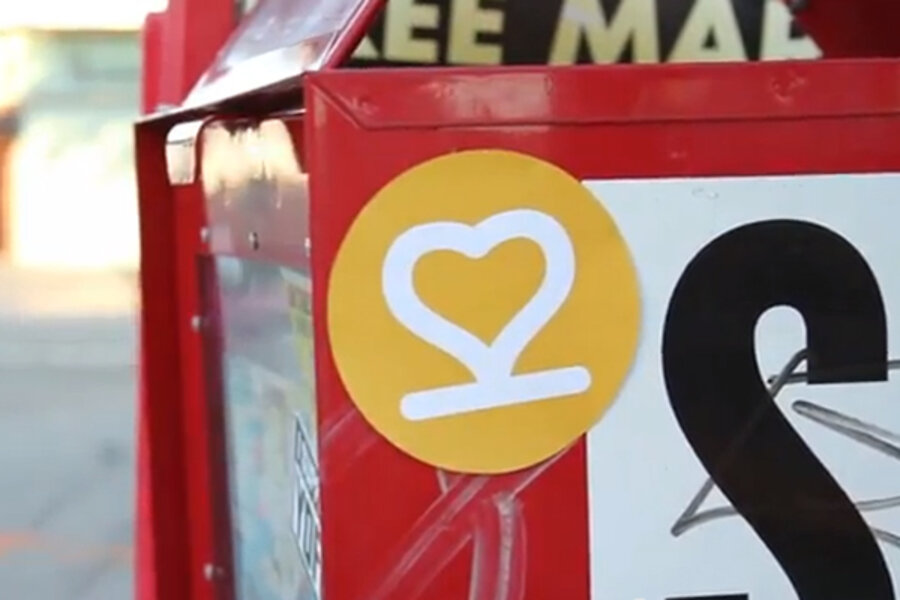Social media and disasters: When a small post can spur hope
Loading...
Social media transforms into a tool when disasters hit. Twitter, Facebook, and other social networks spread information, allow people to know that their loved ones are safe, and assist in coordinating efforts. That’s why organizations such as Sparkrelief and SF72 have popped up. They use the Internet and social media to increase preparedness, ease relief, and rebuild communities.
Eli Hayes founded Sparkrelief in 2010. He had dealt with disasters his whole life, having lived in earthquake-prone California and been a firefighter. However his inspiration for Sparkrelief came when a fire hit Boulder, Colo. At the time, Mr. Hayes was living in a house with enough room to shelter displaced people. So, in an attempt to help, Hayes headed to the local shelter to see what he could do. Upon his arrival, he was told that he could not offer to host people.
“We think that nobody should control the relief effort,” says Hayes. “You don’t have to be a government official, a charity, or a nonprofit. You can spark a relief effort.”
That was seed for Sparkrelief, a name that embodies what the organization believes. By pooling together community efforts and social media, Sparkrelief provides disaster-stricken communities with food, shelter, medical services, transport services, animal sheltering, and other relief resources.
How does it work? People can register and log into the Sparkrelief.org website. There, an interactive map pinpoints the location of different disasters around the world. A menu appears that lets people click on a disaster. People hit by a disaster can select what they need, whether it be food or something a little trickier, such as finding a place for a family of four with children, pets, and allergies. On the other end, volunteers (other users) can respond to requests. All in all, Sparkrelief.org allows people to find aid within a few clicks.
More than 1,000 food offers were made within Sparkrelief’s first 10 days.
Now, Sparkrelief.org can see as many as 500 people per day during non-emergency periods but as many as 10,000 people in an hour during a disaster. People can volunteer or seek aid online, via Twitter, e-mail, or over the phone.
When it comes to disasters, it’s not just relief that is needed. Awareness and preparedness can save lives during emergencies. That’s why the San Francisco Department of Emergency Management (SFDEM) has teamed with IDEO, a design firm, to create a social network for its hometown – SF72.
SF72 is the product of years of research, testing, and design. The organization believes that everyone in San Francisco should be well stocked and prepared for the 72 hours that follow an emergency, hence the name: SF72.
The program began five years ago, when SFDEM researched just how engaged people were with emergency preparedness. SFDEM found that the resources available only helped people who already had the preparedness mind-set. They found that a big obstacle was the way the resources were presented – the message was scary. So, SFDEM looked to a better way to present the message, one that focused on grass-roots efforts.
“What we found is that communities that are more connected are more resilient,” says Francis Zamora, Public Information Officer for SFDEM.
With that sentiment in mind, SFDEM partnered with IDEO to create a way to bring people together.
IDEO’s Kate Lydon and Nadia Walker explained that the SF72 website is still under construction and will roll out in three phases. The website, which aims to change the way people prepare, will show different screens during times of emergencies and need. Users will be able to connect to share tools and resources with their neighbors and friends.
“In times of emergency, people come together,” says Ms. Lydon.
The SF72 website focuses on preparedness. By connecting neighbors and friends, SF72 reaches into what makes people live where they live. They plan to offer a range of digital and non-digital tools. And although the site is specific to San Francisco for now, SFDEM hopes to branch out. The site is also open-sourced so that other cities can use a similar format to prepare their hometowns.
There’s no denying that social media has changed the way people communicate, but its use as a tool during trying times proves how important it has become.
For more tech news follow Aimee on Twitter, @aimee_ortiz







